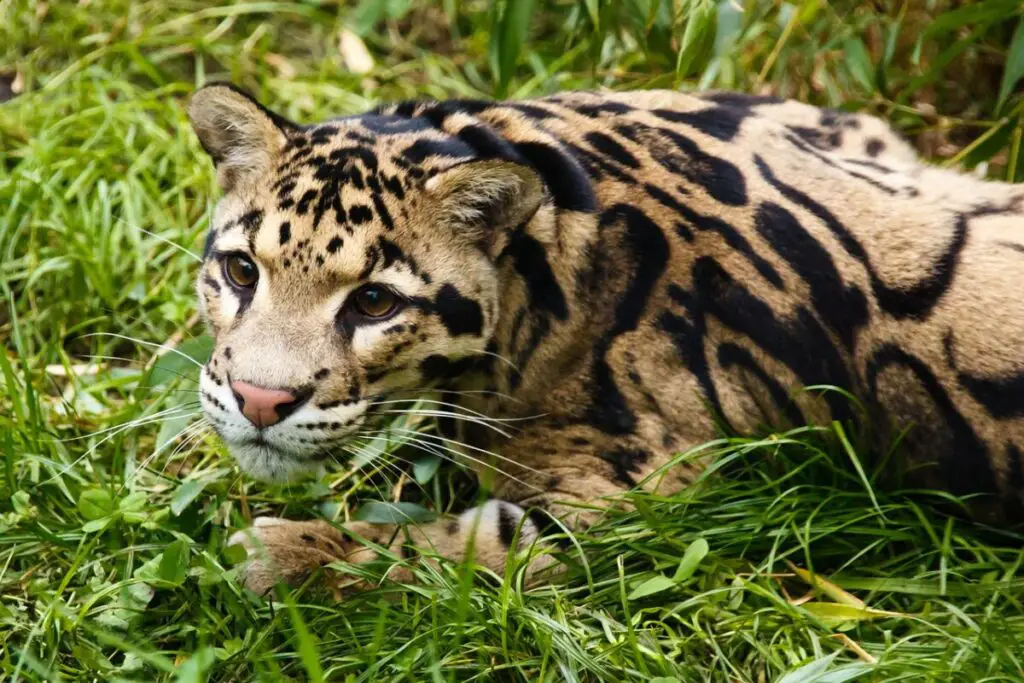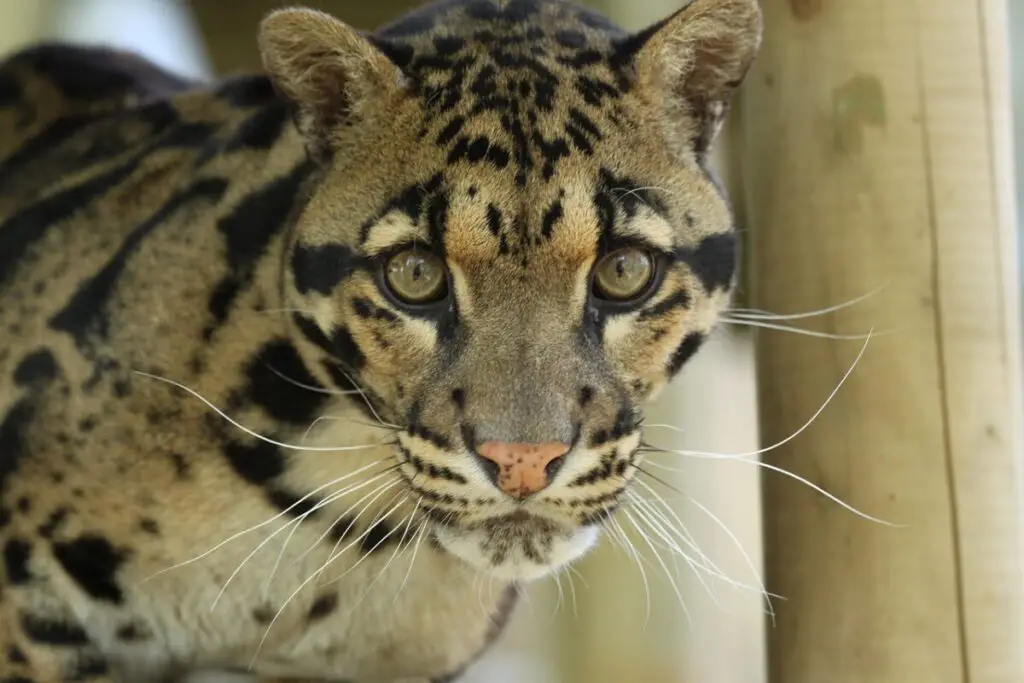The clouded leopard (Neofelis nebulosa) is a beautiful and unique species of big cat found primarily in the rainforests of Southeast Asia. This majestic animal has become increasingly rare due to habitat loss, poaching, and other human activities that have caused population numbers to decline drastically over recent decades. However, conservation efforts are being made to keep this iconic predator from becoming endangered or even extinct. In order to understand why it is so important to protect the clouded leopard, it is essential to gain an understanding of its physical characteristics, behavior, diet, and distribution.
This article will provide an overview of the clouded leopard’s natural history as well as discuss current threats facing these animals and possible solutions for protecting them into the future. It will also review some ongoing research initiatives related to the species that may help inform more effective conservation strategies for ensuring their survival. Finally, it will look at how people can get involved with helping preserve this amazing creature’s existence in our world today.

Species Characteristics
The clouded leopard is a medium-sized wild cat found in the forests of South and Southeast Asia. It has an unmistakable fur pattern, featuring large blotched spots that overlap across its body and legs, with smaller rosettes on its neck and flanks. This distinct pelage gives it excellent camouflage amongst dense foliage and serves as protection against predators.
The clouded leopard has a slender yet powerful build with short limbs, which are well adapted for climbing trees or traversing rocky terrain. Its long tail acts as counterbalance when running up tree trunks; additionally, it can also be used to wrap around branches while sleeping or resting in the treetops. Moreover, this species possesses distinctive facial ruff composed of longer guard hairs – another adaptation that provides thermal insulation from cold climates. In sum, these physical features make the clouded leopard one of the most agile climbers among big cats.
Habitat And Range
The clouded leopard has a wide geographic range, occurring from the Himalayan foothills in northern India to southern China and parts of Southeast Asia. They inhabit evergreen forests, tropical rainforests, deciduous woodlands, grasslands, and occasionally montane regions. In general, their habitats provide sufficient amounts of food resources (including birds, small mammals) as well as ample vegetation for resting places and cover from potential predators.
In terms of distribution range within its habitat type, the clouded leopard is most abundant in lowland areas between 500-1000m elevation while they are scarce or absent in higher altitudes beyond 1000m. Despite this trend however, individual sightings have been reported up to elevations of 2500m due to seasonal migrations – such as during dry months when water sources become more limited at lower levels. Consequently, it can be inferred that this species succeeds across various topographies with regards to both climatic conditions and availability of prey items.
Unveiling the Sensory Abilities of Clouded Leopards: How Good Are Their Senses?
Diet And Foraging Habits
The foraging behavior and dietary habits of the clouded leopard have been well-documented by various researchers. As a generalist carnivore, its diet composition is largely varied and opportunistic – consisting of small birds, mammals such as deer fawns, primates, ungulates (hooved animals), reptiles, and sometimes even fish. Furthermore, they are known to employ different hunting techniques depending on their prey’s size; larger prey items require stalking or ambushing while smaller ones can be caught through a pounce.
When it comes to foraging strategies, these cats prefer not to cover long distances in search of food but rather spend most of their time resting in dense vegetation until an opportunity arises. This allows them to conserve energy while waiting for potential prey items nearby which ultimately increases the efficiency of their hunt. In some instances however, they may also scavenge recently deceased animal carcasses when available. Overall this provides insight into the diversity that exists within their diets despite any seasonality or regional variations.
Clouded Leopards’ Predators Unveiled: A Closer Look
Reproduction And Lifecycle
Reproduction and lifecycle of the clouded leopard are also important aspects to consider when studying their behavior. Mating typically takes place in late winter or early spring, with a gestation period lasting for about 90 to 105 days. After birth, cubs generally stay hidden within dense vegetation until they reach 3 months old – at which point they start accompanying their mother during hunts. The average litter size is two cubs but may vary depending on environmental factors such as food availability.
Unfortunately, due to high levels of predation from other carnivores and human activities like poaching, only about half of all cubs born will survive into adulthood. This low survival rate has been linked to the fact that female clouded leopards are only able to give birth once every two years; thus reducing their overall reproductive potential over time. Despite this however, these cats remain resilient species that can adapt quickly to changing environments while continuing to thrive in many parts of Southeast Asia and beyond.
Conservation Status
The conservation status of clouded leopards is unfortunately a cause for concern. As the species continues to face threats from human activities such as poaching and habitat loss, their population numbers have been steadily declining over time. This has resulted in them being classified as “Vulnerable” on the IUCN Red List, meaning they are facing a high risk of extinction within their natural range.
As such, many conservation efforts are underway to help protect these cats and raise awareness about their plight. In particular, there has been an increase in research projects that focus on understanding more about their behavior and ecology so as to better inform future management decisions. Additionally, organizations like Panthera are working with governments across Southeast Asia to create protected areas for clouded leopards where hunting is prohibited and habitats are preserved.
These initiatives provide hope for the future of this majestic cat; however it will be important for local communities to continue supporting conservation efforts if we are to ensure long-term success in safeguarding the species from extinction.

Human Interaction
Human interaction with clouded leopards has a major impact on their survival. In recent years, human activities such as habitat loss and poaching have posed serious threats to the species’ population numbers. Additionally, there are some cases of captive individuals being kept in zoos or animal sanctuaries for educational purposes; however this practice is highly controversial due to its potential negative impacts on wild populations.
Conservation measures are crucial for protecting the future of these cats from further decline. As mentioned previously, organizations like Panthera are working tirelessly towards helping create protected areas where hunting is prohibited and habitats can be preserved. They also promote responsible ecotourism initiatives that provide economic benefits to local communities while reducing human-caused harm to wildlife. Furthermore, raising awareness about the plight of these animals is essential for inspiring people around the world to get involved in conservation efforts and help secure a brighter future for them.
Interesting Facts
Clouded leopards are fascinating creatures, and there is much to learn about them. For starters, they are secretive and nocturnal animals that inhabit the forests of Southeast Asia. They have a unique spotted pattern on their fur which allows them to blend in perfectly with their surroundings – an adaptation that helps protect them from potential predators. These cats can often be found living in mountain regions where snow-capped peaks provide some protection against the cold temperatures.
In terms of size, clouded leopards are considered medium-sized felines; males typically weigh around 20kg while females average 17kg. Despite being small compared to other big cat species, these cats are incredibly powerful due to their strong muscles and sharp claws. Unfortunately, this species’ population numbers have been decreasing over time; as of 2020, it has been listed as vulnerable by the International Union for Conservation of Nature (IUCN).
Given the current threats facing clouded leopards, increased conservation efforts will be necessary if we want to ensure their future survival. With dedicated research and proactive measures taken by organizations like Panthera, we may still be able to save this amazing animal from extinction.
Conclusion
Clouded leopards are a species of wildcat found in parts of Southeast Asia. They are unique among their peers with features such as distinctive cloud-like markings on their fur and long canine teeth. Living primarily in tropical rainforests, they have adapted to the changing environment by utilizing trees for protection from predators and accessing food sources with ease.
Clouded leopard diets typically consist of small mammals and birds, which they can easily pick up thanks to their sharp claws and powerful jaws. Reproduction involves giving birth to litters of two or three cubs after an eighty day gestation period. Unfortunately, this species is considered vulnerable due to human encroachment on its habitat and illegal poaching for commercial trade purposes. Conservation efforts have been made to protect the clouded leopard population but much more needs to be done if we hope to save them from extinction.
Despite these troubles, there are still many fascinating facts about the clouded leopard that make it worth saving. For instance, even though they weigh less than thirty pounds at maturity, their bite force is greater than any other cat species! Additionally, they are excellent tree climbers capable of leaping sixteen feet between branches, making them incredibly agile despite their size. Lastly, unlike most cats who hunt alone or with a partner, clouded leopards will occasionally combine forces with one another while hunting larger prey items like boar or deer!
The clouded leopard is an important part of our natural world that must be taken seriously before it’s too late. Through increased awareness and active conservation efforts we can ensure that future generations get to experience this amazing creature just as we do today so long into the future.
